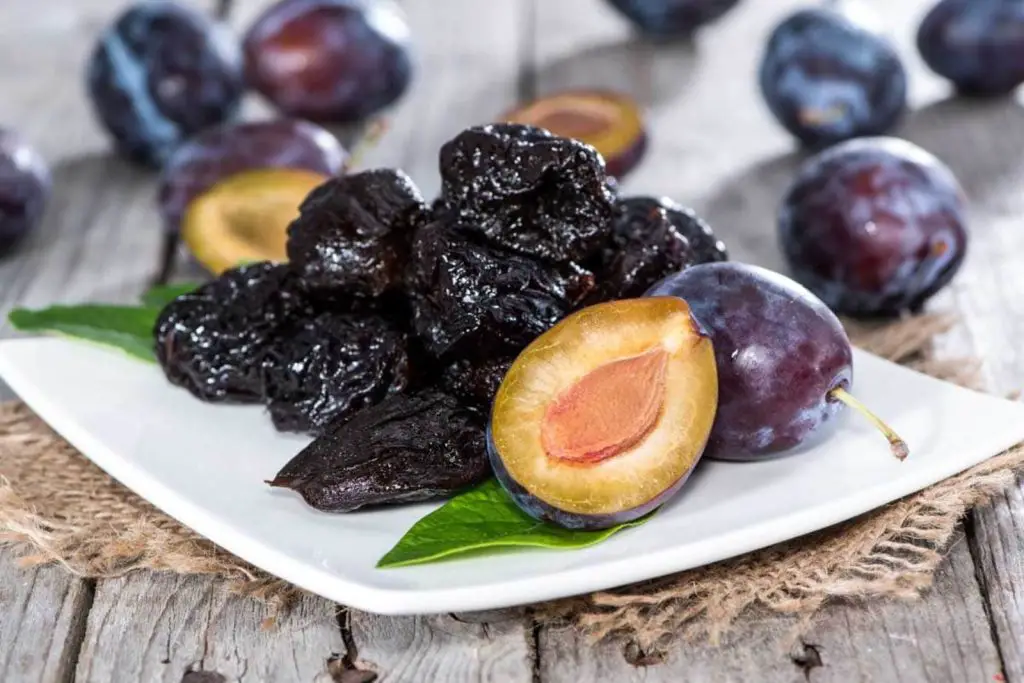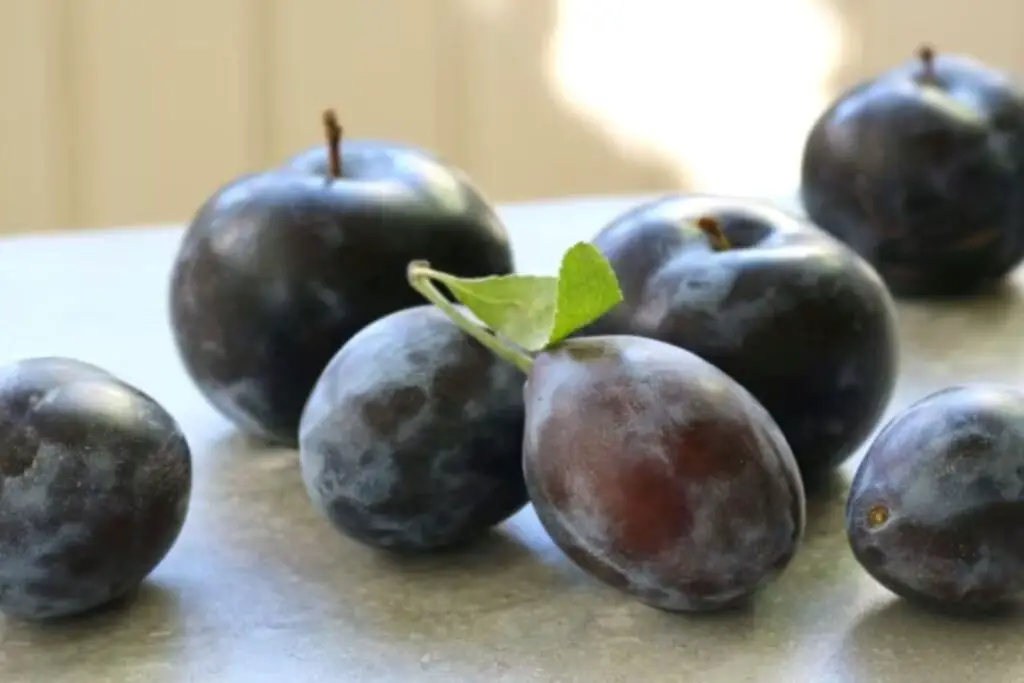
Green tomatoes are a delightful culinary gem that can be transformed into a crispy and tangy treat through the process of frying. Often associated with Southern cuisine, fried green tomatoes offer a unique flavor profile and a satisfying crunch. Whether you grow them in your garden or find them at the farmers’ market, green tomatoes are a versatile ingredient that can be used in a variety of dishes. However, if you find yourself with an abundance of green tomatoes and want to extend their lifespan, freezing them is a practical solution. In this guide, we will explore the art of frying green tomatoes to perfection and provide expert tips on how to freeze them for future enjoyment.
Here’s how to freeze green tomatoes for frying:
- Step 1. Choose firm, unripe green tomatoes that are free from any bruises or blemishes.
- Step 2. Wash the tomatoes thoroughly in cool running water and remove any stems.
- Step 3. Slice the tomatoes into desired thickness.
- Step 4. Prepare a baking sheet lined with parchment paper.
- Step 5. Lay the tomato slices out on the baking sheet.
- Step. 6 Place the baking sheet in the freezer and freeze for 2-3 hours.
- Step 7. Once the tomato slices are frozen, remove them from the baking sheet.
- Step 8. Label the container or bag with the date and contents.
- Step 9. Place the container or bag in the freezer and store for up to 6 months.
Step 1. Choose firm, unripe green tomatoes that are free from any bruises or blemishes.
Choosing firm, unripe green tomatoes that are free from any bruises or blemishes is important for several reasons.
Firstly, firm tomatoes will hold their shape better when sliced and frozen, which will make them easier to handle and fry later on. Ripe tomatoes tend to be softer and may turn mushy when frozen and thawed, which is not ideal for frying.
Secondly, unripe green tomatoes contain more pectin, a natural thickening agent, which helps to maintain their shape and texture when cooked. This makes them ideal for frying, as they will hold up better and remain crispy.
Lastly, it’s important to choose tomatoes that are free from any bruises or blemishes, as these areas may be more prone to spoiling and could affect the quality of the tomatoes when frozen and thawed. By choosing unblemished tomatoes, you’re ensuring that you’re starting with the best possible produce, which will result in a better end product.
Can we also use ripe tomatoes for freezing?
While green tomatoes are the traditional choice for frying, it is possible to use ripe tomatoes for freezing if you prefer. However, keep in mind that the texture and flavor of ripe tomatoes may be different from green tomatoes when they are fried.
To freeze ripe tomatoes, you can follow the same steps as freezing green tomatoes. However, keep in mind that ripe tomatoes are more delicate than green tomatoes, so it’s important to handle them gently to prevent them from becoming too mushy. Additionally, ripe tomatoes may release more liquid as they thaw, which can affect the texture of the final product.
If you decide to use ripe tomatoes for frying, it’s best to choose firm, unblemished tomatoes that are still relatively firm to the touch. You may also want to remove the seeds and excess liquid from the tomatoes before freezing to help maintain their texture.
Ultimately, while green tomatoes are the traditional choice for frying, you can experiment with using ripe tomatoes if you prefer. Just keep in mind that the texture and flavor may be different from traditional fried green tomatoes.
Step 2. Wash the tomatoes thoroughly in cool running water and remove any stems.
Washing the green tomatoes thoroughly in cool running water is an important step to remove any dirt, debris, or pesticides that may be present on the surface of the tomatoes. This helps to ensure that the frozen tomatoes are safe to eat and free from any contaminants.
Removing any stems from the tomatoes is also important as they can be tough and unpleasant to eat. Additionally, stems may puncture the skin of the tomato during freezing or storage, which can cause the tomatoes to spoil or become freezer-burnt.
It’s important to use cool running water to wash the tomatoes as hot water can cause the tomatoes to start to cook and soften, which is not ideal for freezing. After washing the tomatoes, they should be patted dry with a clean towel to remove any excess moisture before slicing and freezing.
Step 3. Slice the tomatoes into desired thickness.
Slicing the green tomatoes to the desired thickness is an important step for even cooking when frying. The recommended thickness of around 1/4 inch to 1/2 inch is ideal because it allows the tomatoes to cook through while maintaining their crispy texture.
It’s important to use a sharp knife to slice the tomatoes, as a dull knife may crush or damage the tomato slices, which can affect the texture and appearance of the fried green tomatoes.
Additionally, it’s important to ensure that the slices are evenly sized so that they cook at the same rate. This will help to ensure that the fried green tomatoes are evenly cooked, crispy, and delicious. If the slices are uneven, some may cook more quickly than others, resulting in some slices being overcooked or burnt while others are undercooked.
By taking the time to slice the green tomatoes evenly, you’re setting yourself up for success when it comes to frying them later on.
Step 4. Prepare a baking sheet lined with parchment paper.
Preparing a baking sheet lined with parchment paper is an important step when freezing sliced green tomatoes. The parchment paper helps to prevent the tomato slices from sticking to the baking sheet, which can be difficult to remove and can damage the slices.
The baking sheet should be chosen so that it fits in your freezer, and the parchment paper should be cut to the size of the baking sheet to ensure a proper fit. Parchment paper is an ideal choice because it is non-stick and can withstand freezer temperatures, so it won’t break down or stick to the tomatoes during the freezing process.
It’s important to use parchment paper rather than wax paper or plastic wrap because these materials may stick to the tomatoes or break down in the freezer, which can affect the quality of the frozen tomatoes.
By preparing a baking sheet lined with parchment paper, you’ll be able to freeze the tomato slices in a way that ensures they maintain their shape and texture, making them perfect for frying later on.
Step 5. Lay the tomato slices out on the baking sheet.
Laying the tomato slices out on the baking sheet is an important step when freezing them. It’s important to ensure that the tomato slices are laid out in a single layer and are not overlapping, as this will allow them to freeze evenly and prevent them from sticking together.
If the tomato slices are overlapped or touching, they may freeze together and become difficult to separate later on. Additionally, overlapping slices may not freeze evenly, resulting in some slices being over-frozen or freezer-burnt while others are not fully frozen.
By laying the tomato slices out in a single layer, you’re allowing for proper air circulation, which helps to freeze the tomato slices evenly and maintain their texture and quality. This will result in better-tasting fried green tomatoes when you’re ready to cook them.
It’s also important to leave some space between the slices on the baking sheet to prevent them from sticking together during freezing. By taking the time to arrange the slices properly, you’ll be able to ensure that the frozen tomato slices are of high quality and ready to be fried whenever you’re ready to cook them.
Step. 6 Place the baking sheet in the freezer and freeze for 2-3 hours.
When the tomato slices are placed in the freezer, the low temperature causes the water inside the slices to freeze, forming ice crystals. These ice crystals help to preserve the texture and flavor of the tomato slices by locking in their moisture and preventing them from becoming soggy or losing their crispiness.
The length of time required for freezing the tomato slices may vary depending on the temperature of the freezer and the thickness of the slices. However, it’s recommended to freeze the tomato slices for at least 2-3 hours, or until they are completely frozen.
It’s important to ensure that the tomato slices are completely frozen before removing them from the freezer, as partially frozen slices may not hold up well when fried and may become mushy or disintegrate in the oil.
By taking the time to allow the tomato slices to freeze completely, you’re ensuring that they’re properly prepared for frying and will result in crispy and delicious fried green tomatoes.
Step 7. Once the tomato slices are frozen, remove them from the baking sheet.
A freezer-safe container or airtight bag should be used because it will help to keep the tomato slices fresh and prevent them from absorbing any unwanted flavors or odors from other items in the freezer.
It’s important to label the container or bag with the date of freezing and contents to help you keep track of what’s in your freezer and to ensure that the tomato slices are used before they become too old.
By transferring the frozen tomato slices to a freezer-safe container or airtight bag, you’re ensuring that they stay fresh and are ready to use whenever you’re in the mood for some delicious fried green tomatoes.
Step 8. Label the container or bag with the date and contents.
By including the date on the label, you can keep track of how long the tomato slices have been in the freezer. This is important because frozen foods can lose quality and flavor over time, and it’s recommended that frozen foods be used within a certain time frame to ensure their quality and safety.
Additionally, labeling the container or bag with the contents will help you easily identify the frozen tomato slices in the freezer. This is particularly useful if you have multiple frozen foods in your freezer, as it can be difficult to distinguish one item from another.
By taking the time to label the container or bag, you’re ensuring that your frozen tomato slices are organized and easily identifiable, making it easier to use them for frying when you’re ready to cook them.
Step 9. Place the container or bag in the freezer and store for up to 6 months.
It’s important to store the container or bag in a location in the freezer that is not subject to frequent temperature fluctuations, as these fluctuations can cause freezer burn and affect the quality of the frozen tomato slices.
It’s also important to note that freezing green tomatoes does not eliminate the risk of foodborne illness, so it’s essential to handle the tomatoes safely before and after freezing. Make sure to wash your hands and any utensils or surfaces that come into contact with the tomatoes, and cook them thoroughly before consumption.
By following these steps and properly storing the frozen tomato slices, you can enjoy delicious fried green tomatoes at any time, even during the off-season when fresh green tomatoes are not readily available.
What are the best-recommended bags or containers for freezing green tomatoes before frying?
- Freezer bags: These bags are designed for freezing foods and are made from thicker, more durable materials than regular storage bags. They’re also designed to prevent air from entering the bag, which helps to prevent freezer burn.
- Glass containers with airtight lids: Glass containers are a good option because they’re durable and won’t leach any harmful chemicals into the food. Additionally, they’re airtight, which helps to prevent freezer burn.
- Vacuum sealer bags: Vacuum sealer bags remove all the air from the bag, which helps to prevent freezer burn and maintain the quality of the tomatoes. They’re a good option if you have a vacuum sealer machine at home.
- Plastic containers with tight-fitting lids: Plastic containers are a good option because they’re durable and can be reused. Make sure to choose containers with tight-fitting lids to prevent air from entering and causing freezer burn.
Additional tips: When using bags or containers, make sure to leave some headspace to allow for expansion as the tomatoes freeze. It’s also important to label the bags or containers with the date and contents to keep track of how long the tomatoes have been frozen.
How do you microwave frozen green tomatoes?
To microwave frozen green tomatoes, place them on a microwave-safe plate or dish and microwave on high for 1-2 minutes, checking every 30 seconds to avoid overcooking. Once hot and cooked through, let them cool for a few minutes before serving. However, keep in mind that microwaving may not yield the same crispy texture as traditional frying, and broiling or reheating in an oven or on the stovetop may be a better option for a crisper texture.
Can you thaw frozen green tomatoes in the fridge?
Yes, you can thaw frozen green tomatoes in the fridge. Simply transfer the container or bag of frozen green tomatoes from the freezer to the fridge and allow them to thaw overnight or for several hours until completely thawed. Thawing in the fridge is the safest and most recommended method, as it helps to prevent the growth of harmful bacteria that can occur when food is left at room temperature for too long. Once thawed, the green tomatoes can be used for frying or other recipes as desired.
Other related questions
How can I tell if frozen green potatoes have gone bad?
You can tell if frozen green tomatoes have gone bad by checking their odor, appearance, and taste. If they have a sour or rancid odor, appear discolored or have ice crystals or freezer burn, or have an unusual or unpleasant taste, they may be past their prime and should not be used. It’s important to use your best judgment and discard any tomatoes that appear spoiled or questionable to avoid the risk of foodborne illness.
Is it better to freeze or refrigerate green tomatoes?
The best way to store green tomatoes depends on how quickly you plan to use them. If you plan to use them within a few days, refrigeration is the best option. However, if you want to store them for a longer period, freezing is better. Freezing helps to preserve their quality and prevent spoilage for up to 6 months. So, for short-term storage, refrigeration is ideal while for long-term storage, freezing is the best option.
Does freezing green tomatoes dry them out?
Freezing green tomatoes can cause them to lose some moisture, resulting in a slightly different texture when cooked. However, this is normal and not necessarily a bad thing. To minimize moisture loss, freeze the tomatoes quickly and store them in an airtight container. Thaw them before cooking and, if needed, sprinkle them with water or dip them in milk to restore moisture.
Can you refreeze green tomatoes?
It is generally not recommended to refreeze green tomatoes after they have been thawed. This is because freezing and thawing can cause changes in the texture and quality of the tomatoes. When green tomatoes are thawed, ice crystals melt, causing the cells to break down and release moisture. This can result in a loss of flavor, texture, and nutritional value.
Additionally, refreezing can increase the risk of bacterial growth, which can cause foodborne illness. Therefore, it’s best to only thaw the amount of frozen green tomatoes that you plan to use at one time and avoid refreezing them.
Is it okay to use frozen green tomatoes with fresh green tomatoes for frying and cooking?
Yes, it is okay to use a combination of frozen and fresh green tomatoes for frying and cooking. Just be sure to thaw the frozen tomatoes completely and adjust your cooking time and temperature as needed to ensure that everything cooks evenly and turns out delicious.








